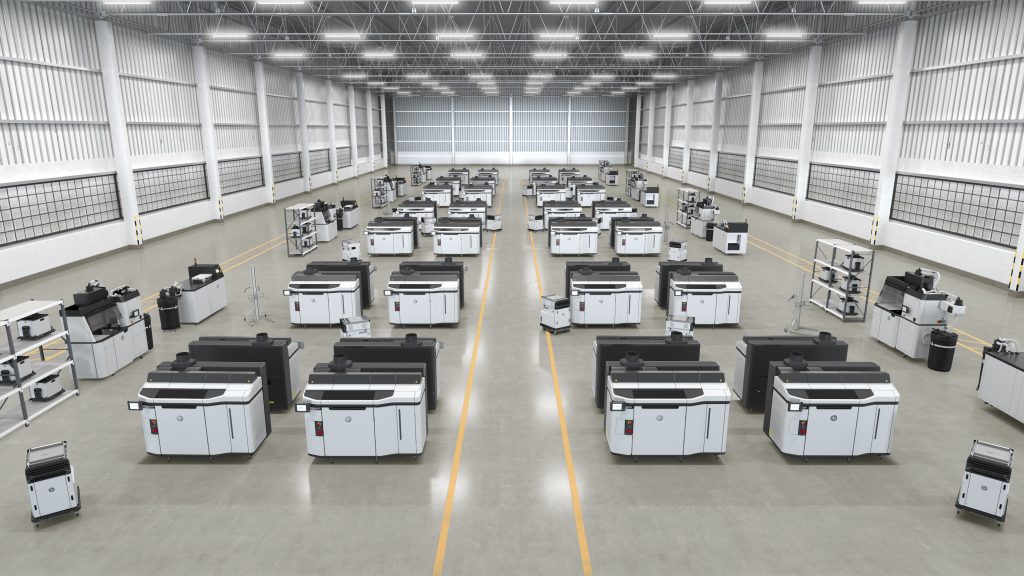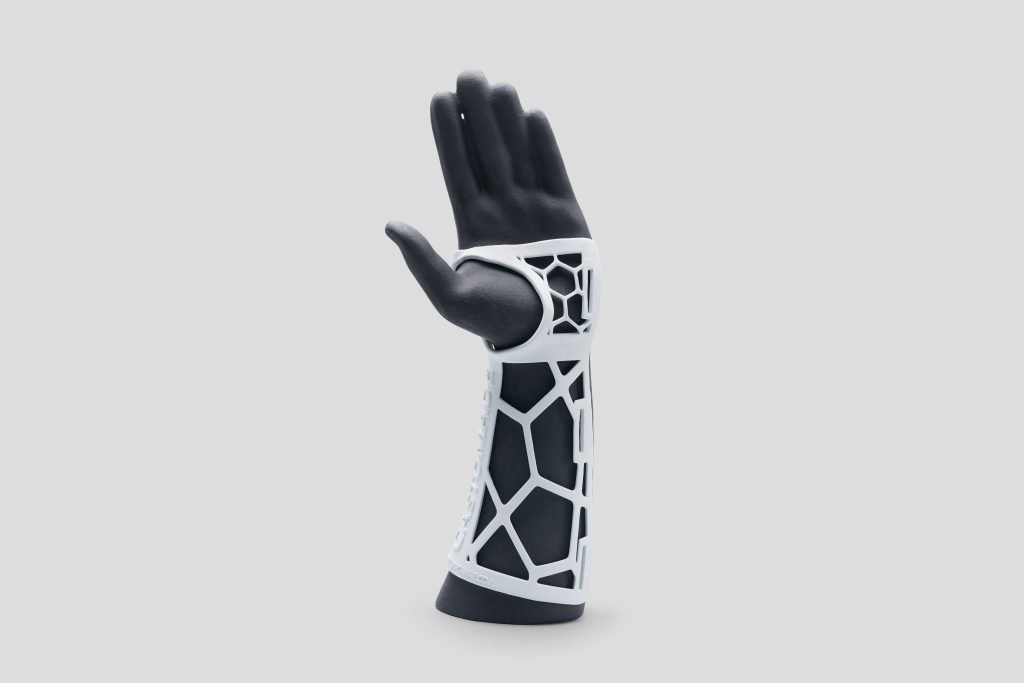Industrial 3D printer adopters have revealed how HP Multi Jet Fusion (MJF) technology is helping them cost-effectively scale plastic part production.
With the firm’s industrial 3D printers, the Jet Fusion 5200 and Jet Fusion 5420W, it’s now possible for users to manufacture end parts with high-reusability plastics, while optimizing cost and productivity. HP says these industrial 3D printing systems drive efficiency ‘per cubic inch,’ due to the labor and material cost savings gained from their high productivity and automation, as well as predictability, and their materials’ reusability.
Since launch, adopters ranging from robotics and machinery part producers to 3D printing service providers, like DI Labs, Prototal Industries, and Weerg, have each revealed how these manufacturing-ready industrial 3D printers are allowing them to meet their varying production needs.
“Additive manufacturing delivers on today’s most urgent market demands including sustainable innovation, hyper-personalization, and business resiliency,” said Didier Deltort, President of Personalization & 3D Printing at HP. “Together, with our global network of partners and customers, we are scaling additive manufacturing to meet these needs.”
Industrial 3D printers by HP
Since it was first introduced in 2014, MJF has been used to 3D print over 170 million parts, for customers in the aerospace, medical, automotive, education, consumer goods, and manufacturing service sectors. As its offering has begun to meet demand from customers in new industries, HP has expanded its industrial 3D printer portfolio in tandem, launching the Jet Fusion 5200 and 5420W in recent years.
When the former first came out in 2019, it was marketed as a factory-ready system capable of addressing industrial 3D printing needs. Launched alongside a build unit, processing station, and cooling unit, the HP Jet Fusion 5200 is designed to deliver improved economics, performance, and part quality, to those 3D printing in ‘production environments.’

According to HP, the machine itself features a print speed of up to 5058 cm³/hr and a 380 x 284 x 380 mm build volume that enable it to achieve ‘best-in-class economics.’ This claim is justified, the firm says, by the system’s high level of productivity (over 160,000 cm3 per day), its robust ancillary lineup, which automates materials mixing, and integrated software that helps streamline users’ workflows.
On the software side, the HP Jet Fusion 5200 industrial 3D printing solution also features a consolidated dashboard that collates data from multiple management systems. This helps users streamline their workflow, optimize job efficiency, and scale into industrial production.

Similarly geared towards industrial 3D printing, the HP Jet Fusion 5420W launched at Formnext last year. The first in what’s set to be a series of Jet Fusion 5400 products, the machine is designed to bring MJF’s industrial-grade reliability, low cost per part, and enhanced manufacturing predictability to the production of white goods.
At Formnext, it was revealed how the technology has already allowed users like DI Labs, Prototal Industries, and Weerg, to address ‘innovative white applications.’ In fact, Jan Löfving, CEO of Prototal, said it had seen “immediate interest in the new white applications” from customers, thanks largely to the 5420W.
Carl Douglass, Co-Founder of DI Labs, another HP Jet Fusion 5420W industrial 3D printer user, added: “The new HP Jet Fusion 5420W 3D Printing Solution gives us another valuable tool in our toolbox to serve healthcare applications where white parts are an essential aesthetic. After printing over a thousand parts, we could not be more pleased with the surface quality, consistency, and white color. This new addition is a perfect complement to our existing HP Jet Fusion machines and allows us to expand our offerings.”
Where is industrial 3D printing by HP applied?
From molds to end-use spares, HP Jet Fusion industrial 3D printers are being deployed by manufacturers across multiple industries to create parts that feature optimized mechanical properties, without incurring lengthy lead times.
Said to be ideal for automotive, consumer goods, healthcare, and industrial 3D printing applications, the new HP Jet Fusion 5420W Series is already proving a popular means of addressing white applications among early adopters. In fact, HP Digital Manufacturing Network (DMN) member Prototal Industries, has hailed the system for “equipping it to take on bold, innovative” new client projects.
“HP continues to provide us with the advancements we need to push the boundaries of additive manufacturing and produce the final parts our customers need,” added Löfving. “Beyond the industrial grade production HP delivers, we are seeing immediate interest in the new white applications made possible by the latest addition to HP’s Multi Jet Fusion family.”
At Formnext, HP also debuted some of the more innovative applications of its wider MJF portfolio, including GKN Additive-mass produced spoiler seals, designed to provide better fuel efficiency. Smith Optic’s MAG Imprint 3D Goggles were also debuted at the show. Using HP MJF 3D printing, it was said the goggles could be made to fit perfectly to each user’s face, in a way that eliminates light/air leaks.
Any questions? Reach out to an industrial 3D printing expert here.
HP sponsored this article.
To stay up to date with the latest 3D printing news, don’t forget to subscribe to the 3D Printing Industry newsletter or follow us on Twitter or liking our page on Facebook.
While you’re here, why not subscribe to our Youtube channel? featuring discussion, debriefs, video shorts and webinar replays.
Are you looking for a job in the additive manufacturing industry? Visit 3D Printing Jobs for a selection of roles in the industry.
Featured image shows a fleet of industrial 3D printers on the production floor – HP Jet Fusion 5200. Photo via HP.



